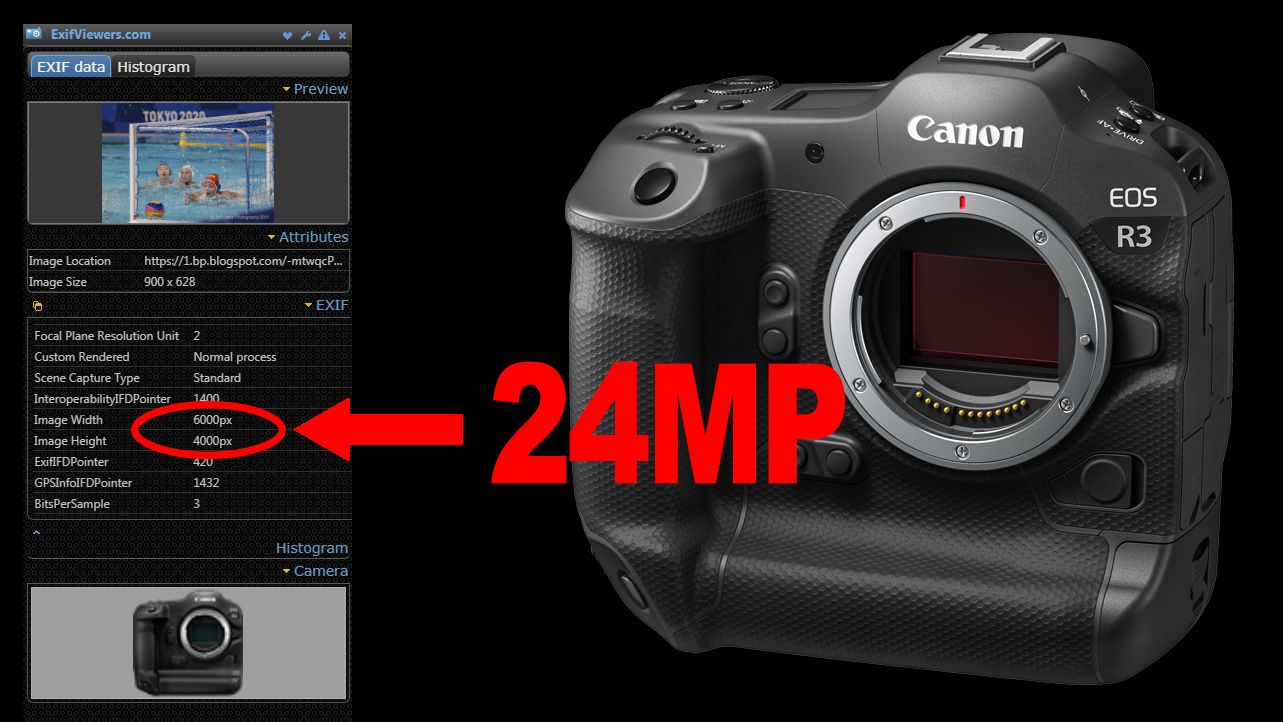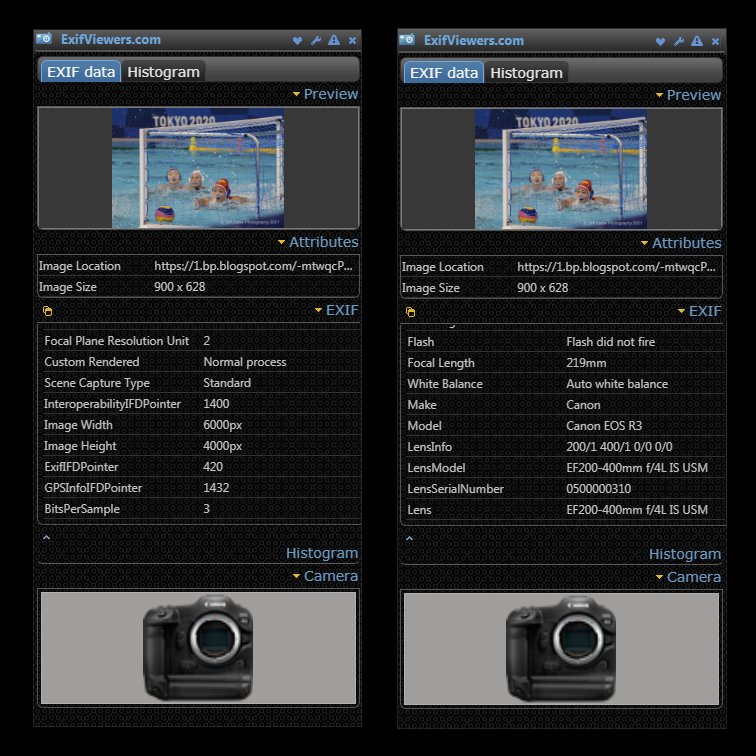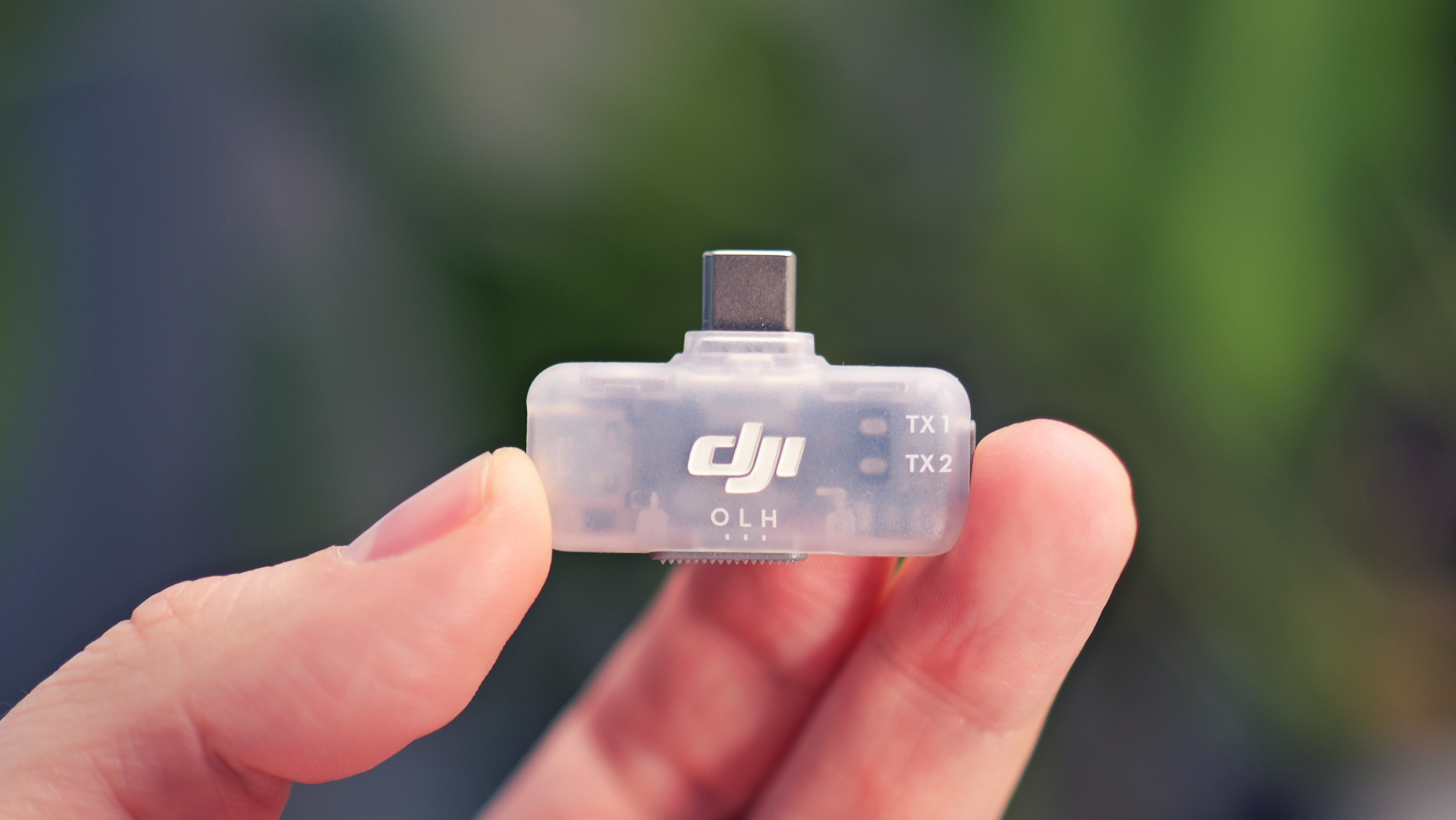Backlash warning: Canon EOS R3 appears to have a 24MP sensor (CONFIRMED)
Report confirms that the Canon EOS R3 is only 24MP – less than both the Sony A1 (50.1MP) and Nikon Z9 (≥39MP)

UPDATE: If the existing EXIF evidence that the Canon EOS R3 has a 24MP sensor wasn't confirmation enough for you, DPReview has now doubly confirmed the resolution by speaking to an Olympics photo editor.
As explained in the original story below, metadata parsed from Tokyo 2020 photographs shared by Jeff Cable revealed that his images taken on a Canon EOS R3 possess a 6000 x 4000 pixel resolution, equating to a 24MP sensor.
• Read more: Best professional cameras
Now, however, DPReview has spoken to a picture editor covering the Olympics, who confirms the internet sleuthing.
"After speaking with with a photo editor who manages images captured by photographers at the 2020 Tokyo Olympic Games, DPReview can confirm the maximum resolution of files coming straight out of Canon EOS R3 cameras being used at the Olympics is 6000 x 4000 pixels, meaning the sensor inside is 24MP. File sizes come in between 14MB and 16MB."
ORIGINAL STORY (29 Jul 2021): The Canon EOS R3 'only' has a 24MP sensor, according to EXIF data parsed from test shots taken at the 2020 Olympic Games in Tokyo.
If true – and it appears that it is – it would mean that the Canon EOS R3 has lower resolution than its direct rivals the Sony A1 (50.1MP), and the upcoming Nikon Z9. While the latter hasn't had its resolution officially confirmed, Nikon has announced that the camera will shoot 8K video – which means that it will be a minimum of 39MP (for which is required for standard 8K, with 8K DCI demanding 45MP).
The best camera deals, reviews, product advice, and unmissable photography news, direct to your inbox!
The R3's true sensor resolution, which had been rumored to be as high as 45MP, was discovered by Neale Smith on the Canon Rumors forum. He used the EXIF Viewers plugin to analyze images posted by sports photographer Jeff Cable, who has been testing the R3 at the Olympics.
The metadata was not scrubbed from the images, meaning that the plugin was able to confirm not just the camera model and lens, but also the resolution of 6000 x 4000 pixels – which is exactly 24 megapixels.
"From the EXIF it looks like 24MP, bit disappointed to be honest, was hoping for closer to 30MP, I might have just bought one if it had!" wrote Neale. "Canon just don't put big MP sensors in pro spec bodies anymore, because apparently it's only sport shooters that use them?"
As Neale notes, Canon's strategy has indeed been to limit the resolution of its flagship professional cameras to megapixel counts in the twenties, as that's more than sufficient for the news gathering and sports photographers at whom these cameras are aimed.
The Canon EOS-1D X Mark III clocks in at just 20.1MP, which was a strategy mirrored by Nikon prior to the Z9, with the Nikon D6 having a 20.8MP sensor. These already trailed Sony's (still flagship) sports camera, the 24.2MP Sony A9 II, but in the context of the A1 and Z9 a 20-something sensor does feel a bit underpowered when it comes to resolution.
Perhaps the Canon EOS R1, as and when that hits the market, will return fire with a higher megapixel count. For now, though, it looks like the Canon EOS R3 has already lost significant ground in the next leg of the pro camera race.
Read more:
Best Canon camera
Sony A1 review
Canon EOS-1D X Mark III review
Nikon D6 review
Could we see the Canon EOS 5D Mark V in 2020?

James has 25 years experience as a journalist, serving as the head of Digital Camera World for 7 of them. He started working in the photography industry in 2014, product testing and shooting ad campaigns for Olympus, as well as clients like Aston Martin Racing, Elinchrom and L'Oréal. An Olympus / OM System, Canon and Hasselblad shooter, he has a wealth of knowledge on cameras of all makes – and he loves instant cameras, too.

